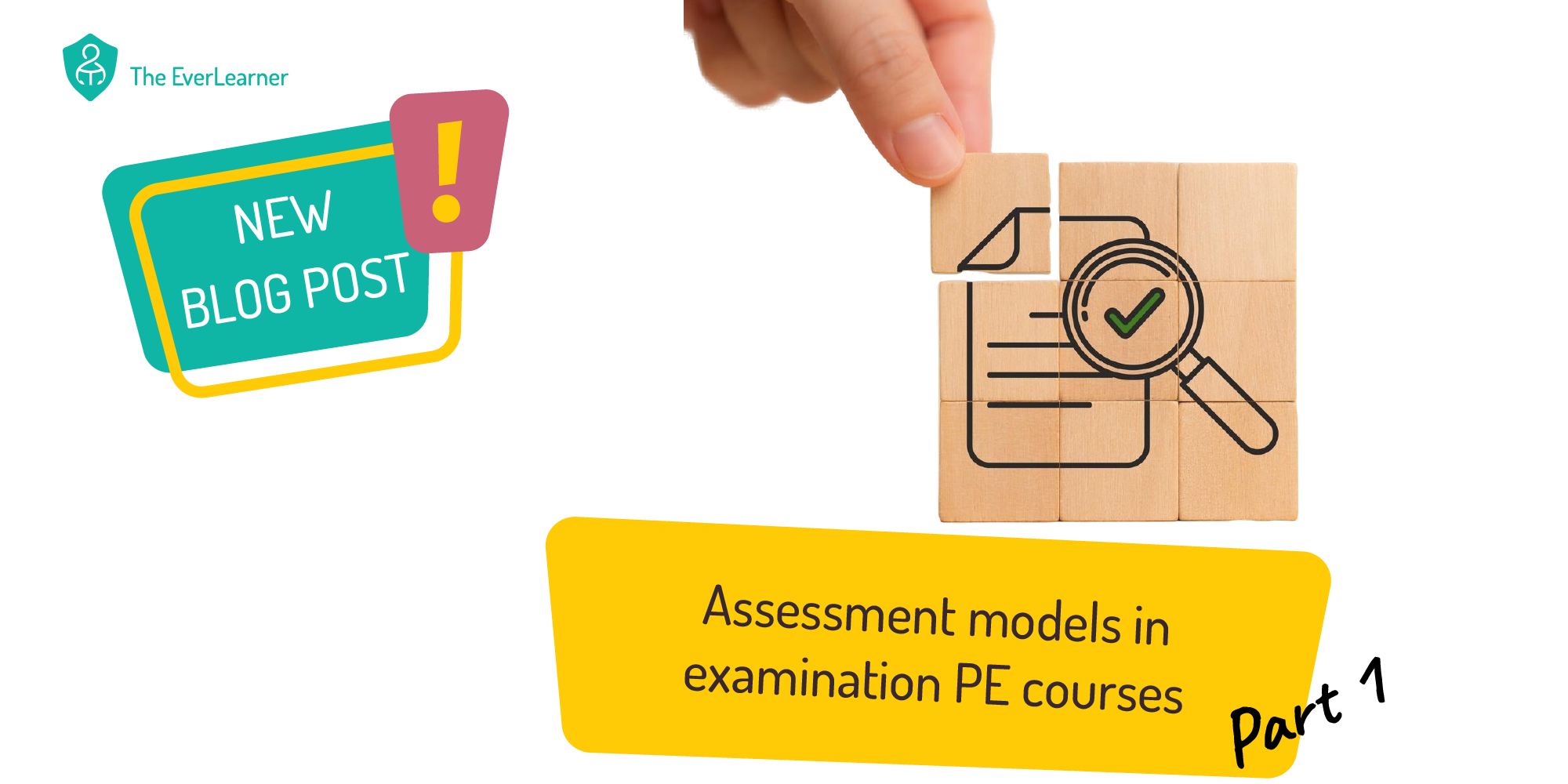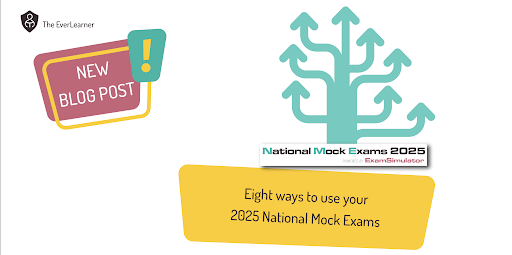Assessment models in examination PE courses - Part 2
Welcome to the blog. Two weeks ago, I wrote Part 1 of this post and today I will complete it. Well, I say, “complete” it, but, in reality, there are endless numbers of assessment models that could be applied in PE courses. In this series, I will be writing about just six:
Model 1: End-of-unit core assessments
Model 2: Skill-based, end-of-unit core assessments
Model 3: Spaced, end-of-unit core assessments
Part 2:
Model 4: Interleaved, end-of-unit core assessments
Model 5: Announced-to-unannounced core assessments
Model 6: EW planning end-of-unit core assessments
I also want to remind you that this post is about examination PE courses NOT about core PE or even practical assessments on examination courses. Also, for the purposes of the post, I will concentrate on AQA GCSE PE as our example of such a course. Remember, all of these models can be applied to any examination PE course.
A few FYIs before we dive in…
Because I am going to focus on AQA GCSE PE, it’s worth you knowing the following in case it is not your course. AQA GCSE PE:
- has two exam components…
- …totalling 156 raw marks…
- …making up 60% of the entire course assessment;
- both exam components contain two pieces of extended writing;
- both exam components contain one piece of synoptic writing.
Therefore, the need to get the exam assessment model right for one’s students is very significant.
Model 4: Interleaved, end-of-unit core assessments
We have already addressed spaced, end-of-unit core assessments and those of you who aligned with that model may wonder why we need a different model for interleaving. Spacing is interleaving, isn’t it? No, it’s not.
Interleaving involves the selection of specific content and skills that have an association. For example, an assessment focussed on levers is likely to be interleaved with joints, movement patterns and antagonistic pairs but is very unlikely to be interleaved with respiratory volumes, say. Interleaving content and skills needs to achieve one or more of the following:
- needs to be potentially confusable (think lung volumes and cardiac volumes or guidance and feedback);
- needs to be directly connected, such as levers and movement patterns;
- needs to share a common skill (guidance and technology are often assessed via the ‘Evaluate’ skill);
- needs to be contradictory. We tend not to get many of these in PE but some topics do disrupt others. This can be assessed together.
So, let’s look at an example. This is the first five core assessments of the Paper 2 AQA GCSE PE course. Please take a moment to look closely at the image:
Notice the details of this image. They really matter. Notice that content is not assessed in a spaced format directly. Rather, content is selected based on the four points I made above. Notice, for example, classification of skills. Consider that this topic will probably be assigned two whole lessons as well as these repeated assessments. Clearly, in this particular course, it is fundamental to student success.
Now look at core assessment 5. Notice that this CA is clearly focused on the ‘Evaluate’ skill. The content has been selected specifically because the student will potentially be evaluating on all those topics. Think about how many times in that CA, students will be writing strengths/positives/fors, then weaknesses/negatives/againsts and then will be concluding. Core assessment 5 is my vehicle for driving this message and skill home. Core assessment 5 is where we bring the ‘Evaluate’ skill to fruition. We will do it more –of course we will– but our CA5 is strategic. The other assessments are too.
Note that something is missing in the image above. I’ve hidden a row (row 5) and I will reveal this in model 6 below.
Model 5: Announced-to-unannounced core assessments
I must confess that this is not my creation. Like all good educators, I have simply nicked this from a colleague and I must pay homage to Adam Barnacle at The Hinckley School (you can read a full case of Adam's work here). What I learned from Adam (and something that can be applied to any form of assessment including test quizzes, checkpoint quizzes or, indeed, core assessments) is using an announced-then-unannounced model. Whether you are making skill, spaced or interleaved assessments, it works like this:
Stage 1: Announce an assessment. Let’s say this is a mini-exam experience sat in exam conditions. Give the students time to prepare.
Stage 2: Some time in the two to three weeks after the announced assessment, repeat the mini-exam (or any other assessment) with no announcement. Make the exact timing slightly random.
Think about this from a student’s perspective. They have a go at a test (this is their actual assessment). Then they improve their writing/drawing of that test with the typical cycle of marking and review that will occur. Then, within a bunch of days, they will repeat that exact experience with no warning. Consider how many times key language gets memorised, mark schemes are learned and answers are practised in preparation for attempt two. Think about the spaced experiences and potentially repeated interleaved experiences and think about the repeated access to skills such as evaluating, justifying or analysing. Students need a structure to cause them to learn and improve in these areas and announced-unannounced models are excellent for this.
Remember two critical points about announced-unannounced models:
- It can be applied to more than exam writing. It can be done with test and checkpoint quizzing too.
- It combines beautifully with all other types of assessment models whether skill-based, spaced or interleaved.
Model 6: EW planning end-of-unit core assessments
Well, this one’s easy to tell you about, having detailed five methods already. Here it goes:
Extended writing needs to be planned for and strategically developed in your core assessment model.
This is something I feel very strongly about. In recent months, I have had more than one conversation where a teacher has told me that they don’t bother developing extended-writing skills with their students because of a range of factors such as the average national marks being so low and that it stresses students. To the teachers who follow this decision as their protocol, I say this to you as a very firm opinion:
It is unacceptable that teachers choose to not develop a core skill of a course with their students.
You may disagree with me because, for example, “OCR GCSE PE only has one six-mark question per paper and the national average is less than 3/6. Therefore, we just don’t bother because the students find it stressful.” (This is an actual conversation I’ve had).
We must, must, must develop extended writing with our students. They have a right to learn these skills. Moreover, an educator should never focus on what a student shouldn’t learn. NEVER!
Ok, with that out of the way, allow me to reintroduce you to model 5: Interleaved core assessments:

Earlier in the post, I stated that I had omitted a row. Let me add it back in:
Please notice two things:
- The inclusion of row 5 “EW planning document”.
- I have included CA 6 this time for some extra context.
You can see that for CA2, CA5 and CA6, extended writing is included in the assessment. Therefore, my guidance and scaffolding of this experience need to be considered. Naturally, I will teach the skills of extended writing but, with regard to the assessment, I will directly scaffold students with an extended-writing framework early in the assessment cycle and then gradually wean the students from it. Notice, for example, that CA6 only has a partial usage of the EW planning document.
My EW planning document is this one:
This particular example is of an AQA six-marker structure and it is designed by me. Other teachers will use other structures, I’m sure. I mean, I wouldn’t! Some of the products that are sold to PE teachers are worryingly mediocre and my model above is utterly free and comes with a nine-marker equivalent too. You can download it here.
The point is this one: I am specifically developing and then assessing the extended-writing skills with strategic scaffolding built in. I urge you to do likewise.
Conclusions
So, there we have it! Six assessment models to get you thinking. I hope they are useful to you. I find it interesting how difficult it is to come across these types of ideas in our sector. What I have written about in Part 1 and Part 2 are, in my opinion, fairly standard concepts, yet I believe that relatively few teachers and departments are aware of them enough. If I’m right, why is that?
Remember that there is no specific right or wrong model to use. However, I would argue that, once you start on an assessment journey, you are quite likely to end up at models 4, 5 and 6. It’s what happens! Embrace that journey and see how many colleagues you can take with you.
Thanks for reading.
Have a lovely day.
James
%20Text%20(Violet).png)






